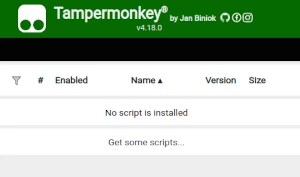Playwright
Playwright是由Microsoft开发的现代化端到端(E2E)测试框架,支持Chromium、Firefox、WebKit等主流浏览器,并提供跨语言API(JavaScript/TypeScript、Python、Java、C#)。
它以速度快、稳定性高、异步支持著称,尤其适合复杂Web应用的自动化测试和爬虫开发。以下是从零开始的完整入门指南:
Playwright 官网
https://playwright.dev/
Playwright python 文档
https://playwright.dev/python/docs/intro
Playwright node.js 文档
https://playwright.dev/docs/intro
Playwright java 文档
https://playwright.dev/java/docs/intro
Playwright .NET 文档
https://playwright.dev/dotnet/docs/intro
Playwright 中文文档可以在以下地址找到:
https://playwright.nodejs.cn/
为什么选择Playwright?
Playwright是由微软开发的开源自动化测试工具,旨在提供跨浏览器的自动化测试支持。与Selenium等传统工具不同,Playwright不仅支持Chrome、Firefox和WebKit等主流浏览器,还提供了以下显著优势:
-
跨浏览器支持:能够在多个浏览器(包括Chromium、Firefox和Safari)上进行自动化测试,确保软件在不同平台的兼容性。
-
强大的功能支持:支持页面元素的动态交互、网络请求拦截、浏览器上下文模拟等高级功能,能够高效地模拟用户操作。
-
快速执行:Playwright具有极高的执行速度,适用于需要快速反馈的自动化测试任务。
环境安装(以Python为例)
Playwright有Node.js、Python、C# 和 Java语言版本,本文介绍Python版本的Playwright使用方法。
Playwright的Python版本仓库地址:https://github.com/microsoft/playwright-python
安装Python(≥3.7)并验证:
python –version # 需输出3.7+
安装Playwright库:
pip install playwright
或者使用镜像源安装
pip install playwright -i https://mirrors.aliyun.com/pypi/simple/
Downloading playwright-1.48.0-py3-none-manylinux1_x86_64.whl (38.2 MB)
━━━━━━━━━━━━━━━━━━━━━━━━━━━━━━━━━━━━━━━━ 38.2/38.2 MB 8.7 MB/s eta 0:00:00
Downloading greenlet-3.1.1-cp38-cp38-manylinux_2_24_x86_64.manylinux_2_28_x86_64.whl (605 kB)
━━━━━━━━━━━━━━━━━━━━━━━━━━━━━━━━━━━━━━━━ 606.0/606.0 kB 18.3 MB/s eta 0:00:00
Downloading pyee-12.0.0-py3-none-any.whl (14 kB)
Installing collected packages: pyee, greenlet, playwright
Successfully installed greenlet-3.1.1 playwright-1.48.0 pyee-12.0.0
指定版本安装
$ pip install playwright==1.48.0
$ python -m playwright install
安装浏览器内核(默认Chromium):
查看所有支持的浏览器:
playwright install --help
安装浏览器内核(windows 默认Chromium)
playwright install chromium # 可选firefox/webkit
Downloading Chromium 139.0.7258.5 (playwright build v1181) from https://cdn.playwright.dev/dbazure/download/playwright/builds/chromium/1181/chromium-win64.zip
安装浏览器内核(linux下)
BEWARE: your OS is not officially supported by Playwright; downloading fallback build for ubuntu20.04-x64.
Downloading Chromium 130.0.6723.31 (playwright build v1140) from https://playwright.azureedge.net/builds/chromium/1140/chromium-linux.zip
164.5 MiB [====================] 100% 0.0s
在防火墙或代理后面安装
pip install playwright
HTTPS_PROXY=https://192.0.2.1 playwright install
Playwright默认安装路径
Playwright 将 Chromium、WebKit 和 Firefox 浏览器下载到操作系统特定的缓存文件夹中:
Windows 上的 %USERPROFILE%\AppData\Local\ms-playwright
macOS 上的 ~/Library/Caches/ms-playwright
Linux 上的 ~/.cache/ms-playwright
这些浏览器安装后将占用数百兆磁盘空间
使用环境变量设置安装路径.将浏览器下载到特定位置
pip install playwright
PLAYWRIGHT_BROWSERS_PATH=$HOME/pw-browsers python -m playwright install
编写python爬虫脚本,进行百度模拟搜索。
python_wright_baidu.py
#!/usr/bin/env python3
from playwright.sync_api import sync_playwright
with sync_playwright() as p:
#for browser_type in [p.chromium, p.firefox, p.webkit]:
#browser = browser_type.launch()
#print(browser_type.name)
browser = p.chromium.launch(headless=False)
page = browser.new_page()
#page.goto('http://playwright.dev')
page.goto("https://www.baidu.com")
print(page.title())
print(page.url)
#print(page.content())
# 输入搜索词并提交
page.locator("textarea#chat-textarea").fill("c1g军火库")
page.locator("button#chat-submit-button").click()
#page.screenshot(path=f'example-{browser_type.name}.png')
page.wait_for_timeout(1000) # 简单等待(实际推荐用事件等待)
results = page.locator("#content_left").all()
for item in results:
print(item.inner_text())
browser.close()
使用drissionpage可以参考
Linux 安装drissionpage 和chrome


















近期评论